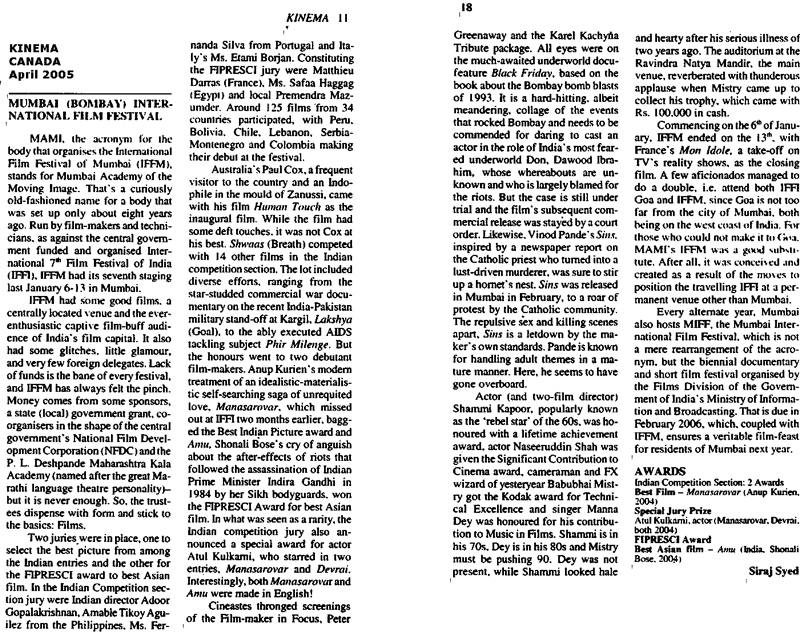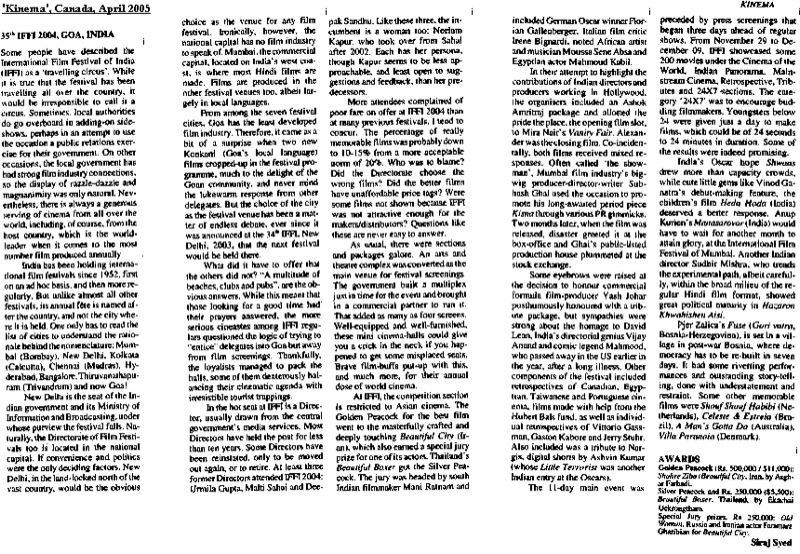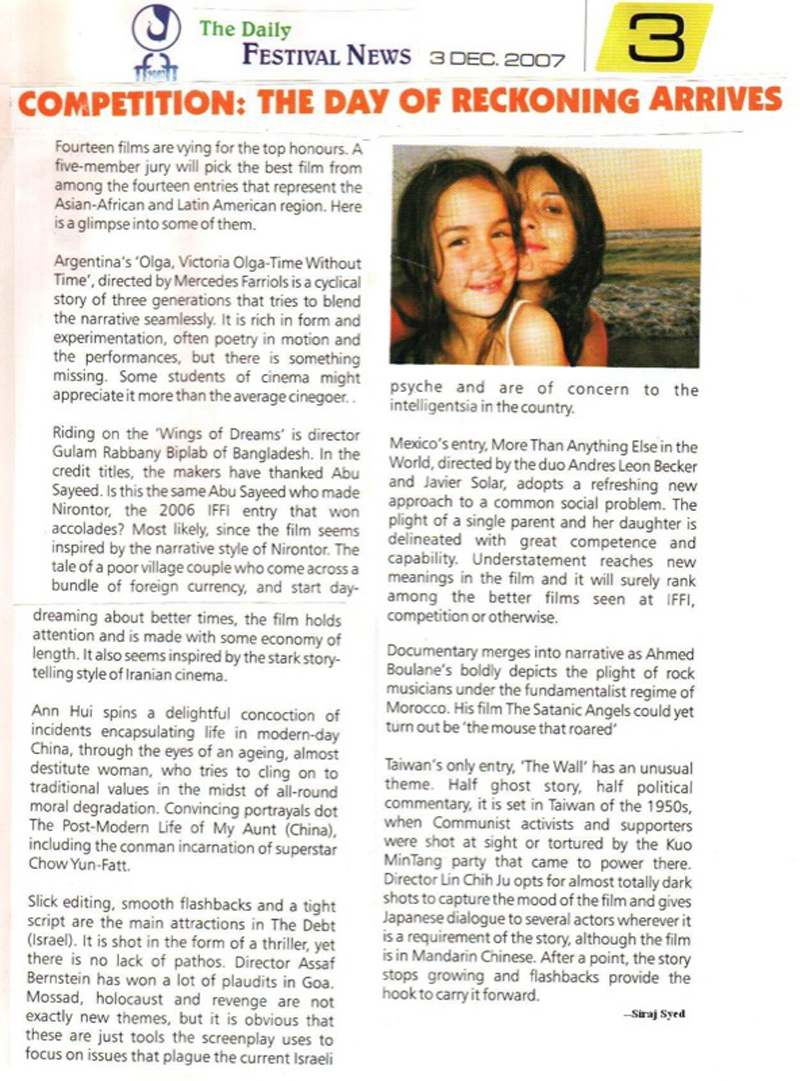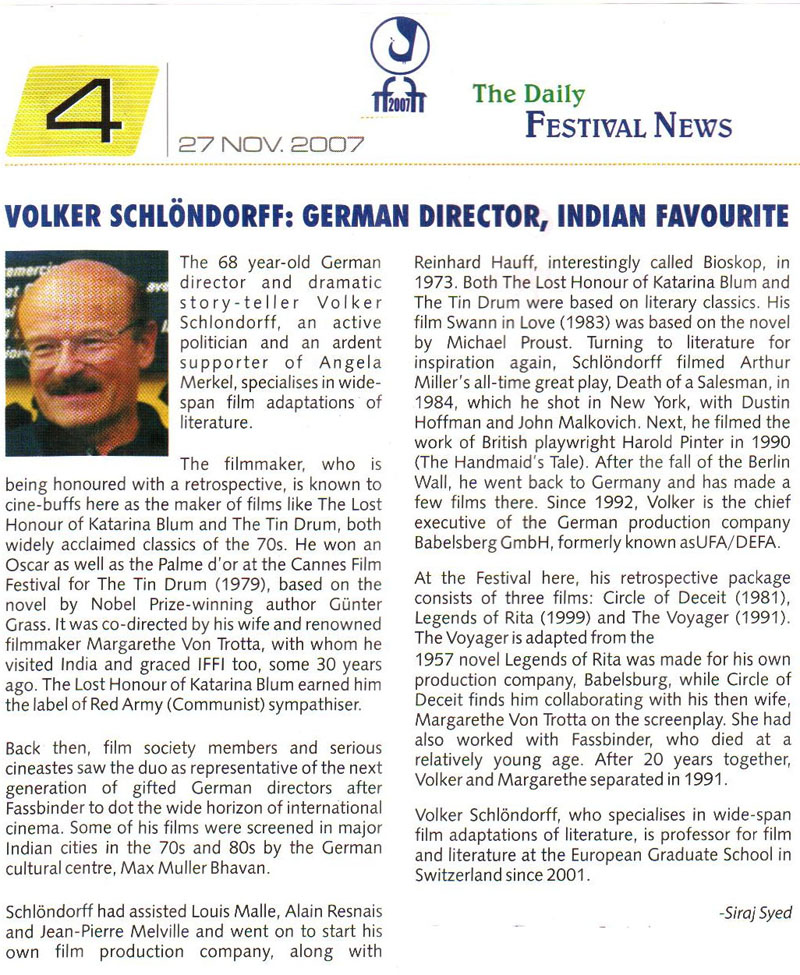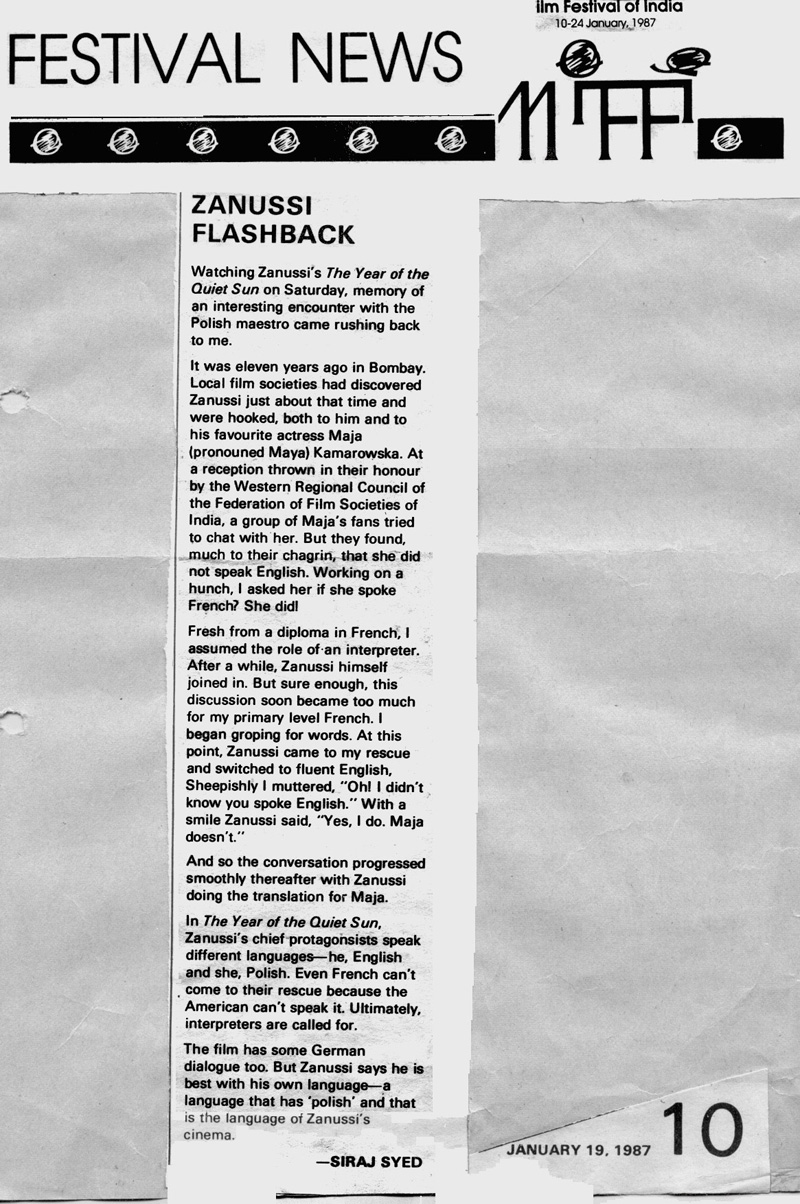|
|
||
|
Pro Tools
FILMFESTIVALS | 24/7 world wide coverageWelcome ! Enjoy the best of both worlds: Film & Festival News, exploring the best of the film festivals community. Launched in 1995, relentlessly connecting films to festivals, documenting and promoting festivals worldwide. Working on an upgrade soon. For collaboration, editorial contributions, or publicity, please send us an email here. User login |
The Grudge, Review: Grudging a sequel
The Grudge, Review: Grudging a sequel A horror film has to deliver high voltage terror that not only reaches the benchmark set by recent movies in the genre but rise above it, if it hopes to make significant impact. It can use tropes like jump-cuts and four-frame cuts to jolt you, yet there has to be enough juice to hold the film together and tap the fear factor recurrently, for 90-120 minutes. The Grudge fails on these counts, though it must be granted, without any grudge, that it is welcomingly low on tropes and familiar horror ploys, choosing to blend the genre with a murder mystery thread instead. Beginning abruptly where the last film left off, The Grudge is a reboot of the 2004 American remake of the Japanese horror film Ju-On: The Grudge, both of which were directed by Takashi Shimizu. The film's events take place at the same time as those of the 2004 film. It is the fourth instalment in the series, which is now 16 years old. Its India release is on the same day as its USA release. In a non-linear narrative, the film addresses two time frames: 2002 and 2004. A house in Japan is cursed by a vengeful ghost (or ghosts?) that doom(s) those who enter it with a violent death. That happens in 2002. When a traumatised inmate returns to the USA, she carries the curse with her, and more deaths occur in 2004. In the present, Detective Muldoon is investigating the discovery of charred human remains, found in a car, which has had an accident, when she gets a lead to an address. Told by her police partner Detective Goodman not to go anywhere near the house, because it has a history, she nevertheless decides to investigate. There, she discovers the house has been cursed by a vengeful spirit. The long-haired ghost not only brutally kills anyone who comes inside, but it also follows Muldoon home, where she lives with her young son. This ghost can appear and disappear at will, take various shapes and become other humans too. Inhabiting the house on 44 Reyburn Drive, the ghost caused the deaths of the Landers family. It drove Detective Wilson, her predecessor and Goodman’s partner in the investigation, crazy, and he shot himself in the face. He is now recuperating in a hospital, where he has been confined to the psychiatric ward. The ghost has driven not only one or two but three families to suicide and murder, including one wherein the husband wanted assisted euthanasia for his terminally ill wife. Muldoon is brave and fearless, but even she cannot shrug-off the ghost, which probably belongs to somebody who died while in the grip of rage, for, the film suggests, a curse is born, and it is such souls that turn into ghosts and kill all who come in contact with them. Those who are not killed are driven to suicide. (Did this William Shakespeare quote from Julius Caesar inspire the plot? “The evil that men do lives after them).” Muldoon, who lost her husband to cancer three months ago, lives alone with her little child. Will she be able to ward-off the evil spirit? Screenplay by director Nicolas ‘Nick’ Pesce (director of The Eyes of My Mother and Piercing; “I make weird shit”) and story by Nicolas Pesce and Jeff Buhler (Nightflyers, The Prodigy, Pet Sematary) make use of that most standard of all supernatural film tropes: couples moving into haunted, old-world houses. Here, it adds other locales too, for the ghost follows the visitors to their houses and offices and vehicles as well. Keeping Wilson alive after the near-fatal shooting in his own face was a good ploy, as he could add to the proceedings via his flashbacks, captured in audio, recorded by Muldoon. Making Muldoon the protagonist, the writers have made a statement about marriage, widow-hood, women in the police force and children who are brought-up by single parents. Another ethnic statement is made by making William Matheson black and Faith Matheson white. Then there is the whole track of assisted suicide (euthanasia or murder?) and the ethical issues of unbearable loss and grief. Goodman’s character is poorly etched and contributes little, although he remained unaffected by the ghostly presence that drove Wilson nuts. Sudden intrusions and apparitions are fine, but there has to be some logic or design. Though visually stunning, some of these momentary ‘possessions’ of the characters by the evil spirit are arbitrary and deliberately planted, to shock and awe, rather than emanating and evolving from story developments. Many of the ghostly interventions are explained in flashes, but some are not explained at all, like the capturing of the ghost’s presence on CCTV, its viewing by Muldoon, and the subsequent erasure when she plays to another officer. Andrea Riseborough as Detective Muldoon deals well with the complexities of her role and impresses. Demián Bichir as Detective Goodman smokes, speaks with a drawl and has little else to do. A red herring is planted in his home, to perhaps mislead the audience and try to make them guess whether he is involved in the hauntings. John Cho as Peter Spencer, the real estate agent who gets sucked into the vortex and Betty Gilpin as Nina Spencer, his pregnant wife, are both in good form. As the black and white couple, Lin Shaye (Faith Matheson) and Frankie Faison (William Matheson) do a fine job. Some of the scariest moments come from acts involving Shaye. John J. Hansen is Burke, the Muldoon child, and is well-used in a genre that taps on the mother-son bond to propagate horror. As the assisted suicide consultant, Lorna Moody, Jacki Weaver has a poorly conceived role and ends up hamming. William Sadler as Detective Wilson has to look a gory sight and speak some his dialogue without half his mouth, a gory sight, which he puts across quite convincingly. The third couple and their daughter are the Landers: Tara Westwood as Fiona Landers, David Lawrence Brown as Sam Landers and Zoe Fish as Melinda Landers. Their parts are small and some scenes are rushed through almost in silhouette. The film begins with Melinda coming out of a house in Japan, and the first scare comes barely a minute later. Looking back at the end, you recall several moments of horror, only to realise that many of them were either imagined, dreamt or felt only by the character in the frame, momentarily. This takes away from the fear factor. Though the film has generally above average performances, the same cannot be said of its screenplay and direction. You will probably want to avoid any visit to 44 Reyburn Drive, if, indeed, there exists such a place, but that’s about all. There isn’t just enough in the narrative to grip you by the neck, though audiences who are prone to getting scared at ghost movie viewings will have plenty to get terrified. Did the original have enough to merit a sequel, and is the successor significantly different and engrossing? Watch it, if really want to find out. Yet, you cannot help feeling that writer-director Nicolas Pesce could have done more with his 93 minutes, like the real scare that greets us in the last shot. Rating: ** Trailer: https://www.youtube.com/watch?v=O2NKzO-fxwQ 04.01.2020 | Siraj Syed's blog Cat. : Andrea Riseborough Betty Gilpin David Lawrence Brown Demián Bichir Frankie Faison horror Jacki Weaver japan Jeff Buhler John Cho John J. Hans Ju-On Lin Shaye Nicolas Pesce Takashi Shimizu Tara Westwood William Sadler Zoe Fish Hollywood FILM
|
LinksThe Bulletin Board > The Bulletin Board Blog Following News Interview with EFM (Berlin) Director
Interview with IFTA Chairman (AFM)
Interview with Cannes Marche du Film Director
Filmfestivals.com dailies live coverage from > Live from India
Useful links for the indies: > Big files transfer
+ SUBSCRIBE to the weekly Newsletter Deals+ Special offers and discounts from filmfestivals.com Selected fun offers
> Bonus Casino
User imagesAbout Siraj Syed Syed Siraj Syed Siraj (Siraj Associates) Siraj Syed is a film-critic since 1970 and a Former President of the Freelance Film Journalists' Combine of India.He is the India Correspondent of FilmFestivals.com and a member of FIPRESCI, the international Federation of Film Critics, Munich, GermanySiraj Syed has contributed over 1,015 articles on cinema, international film festivals, conventions, exhibitions, etc., most recently, at IFFI (Goa), MIFF (Mumbai), MFF/MAMI (Mumbai) and CommunicAsia (Singapore). He often edits film festival daily bulletins.He is also an actor and a dubbing artiste. Further, he has been teaching media, acting and dubbing at over 30 institutes in India and Singapore, since 1984.View my profile Send me a message The EditorUser contributions |



















